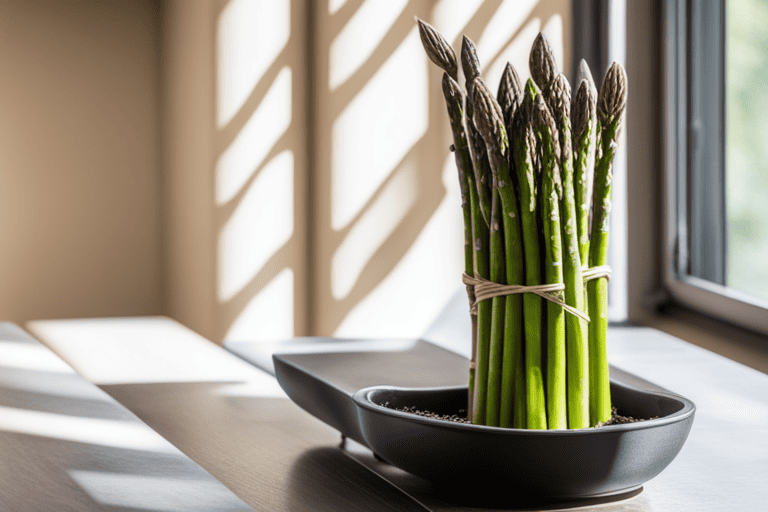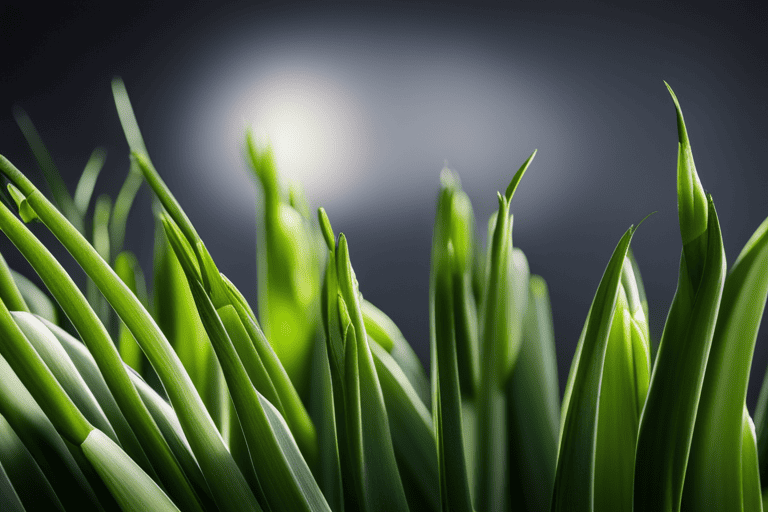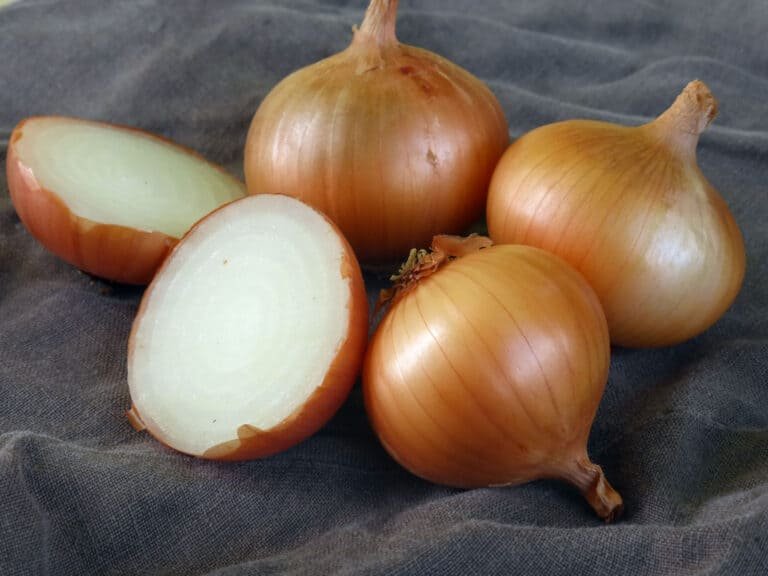In the world of gardening, few plants are as versatile and easy to grow as green onions. Whether you’re a seasoned gardener or just starting out, successfully growing these delicious and nutritious vegetables from seed can be a rewarding experience. However, achieving those vibrant, bountiful bunches of green onions does require some know-how and careful attention to detail.
In this comprehensive guide, we will take you through each step of the process with our expert tips and insights, ensuring that your journey towards cultivating thriving green onion plants is both seamless and successful. So grab your gardening gloves and get ready to dive into The Ultimate Guide to Successfully Growing Green Onions from Seed: A Step-By-Step Approach!
Choosing the Right Green Onion Variety for Your Garden
When it comes to choosing the right green onion variety for your garden, there are a few important factors to consider. First, think about whether you want a traditional green onion or something with unique flavors and appearances. Traditional options like the Evergreen Hardy White and Japanese Bunching varieties are reliable choices that produce tasty onions suitable for most culinary uses.
If you’re looking for something different, there are varieties like Red Grano and Deep Purple that offer eye-catching color variations and slightly different flavor profiles. Additionally, consider the climate in which you’ll be growing your green onions. Some varieties, such as the Welsh Onion or Egyptian Onion, are particularly well-suited to colder climates while others thrive in warmer environments.
Ultimately, the key is to choose a variety that suits your taste preferences and growing conditions so that you can enjoy a successful harvest of fresh green onions from your garden. Taking some time to research and make an informed decision will ensure that you have healthy plants producing flavorful vegetables throughout the season.
Preparing the Soil: Creating the Ideal Growing Environment
Preparing the soil is a crucial step in creating the ideal growing environment for green onions. Start by choosing a location that receives full sunlight and has well-draining soil. Remove any weeds or grass from the area and loosen the soil using a garden fork or tiller.
Next, enrich the soil with organic matter such as compost or aged manure. This will improve its texture and fertility, providing essential nutrients for healthy plant growth. Aim to incorporate about two inches of organic matter into the top six inches of soil.
Lastly, ensure proper drainage by amending heavy clay soils with sand or peat moss. This will prevent waterlogging and root rot, which can be detrimental to green onion plants. Regularly testing the pH of your soil is also recommended, as green onions prefer slightly acidic soil with a pH level between 6. 0 and 7. 0.
By following these steps and ensuring that your soil is well-prepared, you will create an optimal growing environment for green onions, setting them up for success and ultimately achieving a bountiful harvest of delicious homegrown produce.”
Planting Green Onion Seeds: Tips for Success
Green onions, also known as scallions or spring onions, are a popular and versatile vegetable to grow in any garden. To successfully grow green onions from seed, there are a few key tips to keep in mind. First, it’s important to choose the right variety of seeds that suit your growing conditions and preferences. Depending on your climate and desired onion size, you can select from different varieties such as White Lisbon or Evergreen Bunching.
When planting green onion seeds, it’s crucial to provide them with well-drained soil that is rich in organic matter. The ideal pH range for these crops is between 6. 0 and 7. 5; therefore, testing the soil beforehand is highly recommended for optimal results. Sow the seeds thinly about half an inch deep into prepared beds or containers filled with moist soil.
Once planted, ensure that the green onion bed receives sufficient sunlight (about six hours per day) for healthy growth. Regular watering should be done to maintain consistent moisture levels throughout the growing season while avoiding overwatering which can lead to rotting roots.
By following these essential tips for success – choosing suitable seeds, preparing proper soil conditions, and providing ample sunlight and water – you will be well on your way towards enjoying a bountiful harvest of delicious green onions grown straight from your own backyard.

Watering and Fertilizing: Providing Optimal Care for Your Green Onions
Watering and fertilizing are crucial aspects of providing optimal care for your green onions. These practices will help ensure that your plants receive the necessary nutrients and hydration to thrive.
When it comes to watering, it’s important to strike a balance between keeping the soil moist without overwatering. Green onions prefer consistently moist soil, but they can be susceptible to root rot if waterlogged. It is best to water deeply and then allow the top inch of soil to dry out before watering again. This will encourage healthy root development while preventing water-related issues.
Fertilizing is another critical step in maintaining the health of your green onions. Applying a balanced fertilizer with an equal ratio of nitrogen, phosphorus, and potassium can promote vigorous growth and sturdy stems. You can apply granular or liquid fertilizer around the base of the plants every four to six weeks during their active growing season. However, avoid over-fertilizing as this can lead to excessive leafy growth at the expense of bulb development.
By paying close attention to watering and fertilizing techniques, you can provide optimal care for your green onions and enjoy a bountiful harvest of fresh and flavorful homegrown vegetables.
Managing Pests and Diseases: Protecting Your Green Onion Plants
Managing pests and diseases is essential for protecting your green onion plants and ensuring a successful harvest. One common pest that can affect green onions is the onion thrip, a tiny insect that feeds on the leaves and causes stunted growth. Regular inspection of your plants and early detection of thrips are key to controlling their population. You can use organic insecticides or introduce beneficial insects like ladybugs to prey on them.
Another issue that green onions may face is fungal diseases such as white rot or pink root. These diseases can cause root decay, yellowing of the foliage, and eventually the death of the plant. To prevent these diseases, it’s important to practice good sanitation by removing infected plant debris from the garden and improving soil drainage. Additionally, you can apply fungicides or use resistant varieties of green onions to minimize the risk.
By being proactive in managing pests and diseases through regular monitoring, appropriate control measures, and implementing good gardening practices, you can protect your green onion plants from potential damage and ensure a healthy crop year after year.
Harvesting and Storing Green Onions: Tips for Maximum Flavor and Freshness
Harvesting and storing green onions is a crucial step in maintaining their maximum flavor and freshness. When it comes to harvesting, it’s best to wait until the plants have reached about 6-8 inches tall before cutting. This ensures that the green onions have matured enough to develop their distinctive taste.
To harvest, simply grab hold of the onion close to its base and gently pull straight upwards. Avoid tugging too forcefully, as this can damage the plant. Once you’ve gathered your desired amount of green onions, it’s time to move onto storing them.
For short-term storage, you can place your freshly harvested green onions in a plastic bag or container with damp paper towels. Make sure they are kept upright and stored in the refrigerator at a temperature between 32-40 degrees Fahrenheit. For longer-term storage, consider freezing your green onions by chopping them into small pieces and sealing them in an airtight container or freezer bag.
By following these tips for harvesting and storing green onions, you can ensure that their flavor remains vibrant and their freshness preserved for future culinary adventures.

Troubleshooting Common Issues: Solutions for a Successful Green Onion Harvest
When it comes to growing green onions from seed, there are a few common issues that gardeners may encounter. One potential problem is poor germination rate. To solve this, ensure that you are using fresh, high-quality seeds and store them properly in a cool, dry place. Additionally, provide the seeds with consistent moisture and warmth during the germination process.
Another issue you may face is overcrowding of plants, resulting in stunted growth. Proper spacing between each plant is essential for air circulation and nutrient absorption. Thin out your onions if they become too crowded and transplant them to allow for optimal growth.
Furthermore, yellowing or wilting leaves can occur due to overwatering or underwatering. It’s important to maintain adequate moisture levels by watering consistently but not excessively. Ensure good drainage to prevent waterlogged soil which can lead to root rot.
By troubleshooting these common issues through careful attention and following expert advice like proper spacing and irrigation techniques – your journey towards harvesting successful green onions should be smooth sailing!






